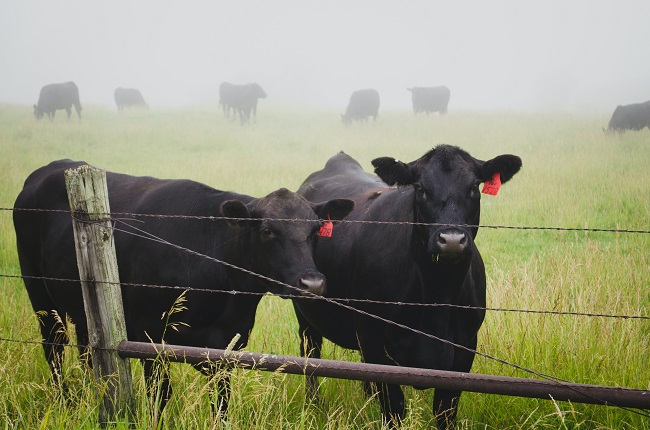
Angus cattle are a breed that originated in Scotland and are known for their distinctive black color. They are one of the most popular breeds of cattle in the United States and are prized for their high-quality meat and their ability to thrive in a variety of environments.
Angus cattle are medium-sized animals with a muscular, well-proportioned body. They are known for their gentle disposition and are easy to handle, making them a popular choice for farmers and ranchers. They are also known for their high fertility rates and their ability to adapt to a wide range of climates and grazing conditions.
Angus beef is highly valued for its tenderness, flavor, and high marbling, which is the flecks of fat within the muscle that add flavor and juiciness to the meat. This high-quality beef has made them a popular choice for both commercial beef production and for the high-end restaurant and retail markets.
Overall, Angus cattle are a versatile and highly valued breed that are an important part of the livestock industry in many countries, including the United States.
Basic Nutrition
A balanced and nutritionally adequate diet is essential for the health and productivity of Angus cattle. The specific nutritional requirements of Angus cattle will vary based on factors such as age, weight, activity level, and the stage of production (e.g., growth, maintenance, gestation, lactation). Here are some general guidelines for a nutrition plan for Angus cattle:
Forage
Forage, such as grass or hay, should be the main component of an Angus cattle’s diet. This provides a source of fiber and helps to maintain rumen health. The quality and quantity of forage should be carefully managed to ensure that it meets the nutritional needs of the cattle.
Energy
Energy is an important component of an Angus cattle’s diet and can be provided through grains, such as corn or barley, or high-energy supplements. Energy requirements will vary depending on the stage of production and the size of the animal.
Protein
Protein is necessary for growth, maintenance, and milk production. Cattle can get their protein from forage, but it may also be necessary to supplement their diet with additional protein sources, such as soybean meal or cottonseed meal.
Minerals
A balanced and adequate supply of minerals, such as calcium, phosphorus, and magnesium, is important for the health and growth of Angus cattle. A mineral supplement can be provided to ensure that cattle receive the necessary minerals in their diet.
Vitamins
Vitamins, such as vitamin A, D, and E, are also important for the health and growth of Angus cattle. A vitamin supplement can be provided to ensure that cattle receive the necessary vitamins in their diet.
It is important to work with a veterinarian or a nutritionist to develop a tailored nutrition plan for your Angus cattle. This will ensure that their dietary needs are met and that they receive the necessary nutrients for optimal health and productivity.
Best Practices for an Angus Cow-Calf Operation
Genetics
Careful selection of genetics is critical to the success of an Angus cow-calf operation. It is important to select bulls and cows that have the desired traits, such as high fertility, growth rate, and carcass quality.
Health Management
Maintaining the health of the cattle is essential for the success of an Angus cow-calf operation. This includes regular veterinary check-ups, vaccinations, and parasite control. It is also important to monitor for any signs of illness or disease and to treat promptly if necessary.
Reproduction Management
Proper reproduction management is critical to the success of an Angus cow-calf operation. This includes a regular breeding program, pregnancy diagnosis, and calf management. It is important to ensure that the cattle have access to bulls with good fertility and to monitor the cows for signs of calving difficulty.
Record Keeping
Accurate record keeping is important for monitoring the performance of the cattle and for making informed management decisions. This includes tracking data such as calving rates, weaning weights, and feed intake.
Facilities
Providing proper facilities for the cattle is essential for their health and well-being. This includes providing shelter, water, and a safe and clean environment for the cattle to live in.
Fun Facts About Angus Cattle
Angus cattle originated in Scotland and are one of the oldest breeds of cattle in the world.
Angus cattle are known for their distinctive black color. Although some individuals may have a small amount of white on the underline, legs, or face, the breed is primarily black.
Angus cattle are highly adaptable and can thrive in a variety of environments. They are hardy and able to survive in harsh climates and rugged terrain.
Angus cattle are one of the most popular breeds of cattle in the United States and are also widely used in other countries, including Australia, Canada, and the United Kingdom.
Related Articles & Free Email Newsletter Sign Up
3 Major Causes of Calving Emergencies in Beef Cattle
Cattle Show to Align North-South When Grazing




Comment here